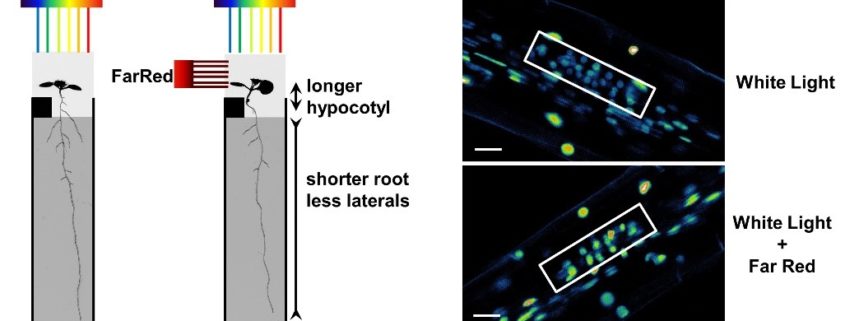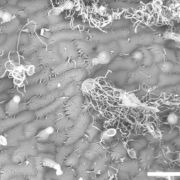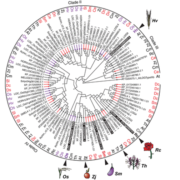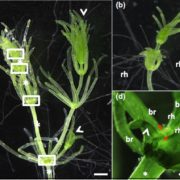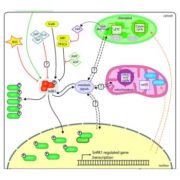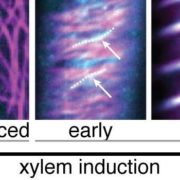Roots Respond to Aboveground Far-Red Light
van Gelderen and Kang et al. investigate the root response to Far-Red light detection in the shoot. The Plant Cell (2017). https://doi.org/10.1105/tpc.17.00771
By Kasper van Gelderen and Ronald Pierik
Background: Sunlight is the energy source for plants, however, when plants grow closely together they may get shaded by other plants. Therefore, plants have evolved mechanisms to perceive other plants through Far-Red (FR) light, which cannot be seen by human eyes, but is reflected in large amount by plant leaves. When plants grow closely together the amount of FR relative to Red light increases and this is perceived by the Phytochrome photoreceptors. When the relative amount of FR increases, plants start to grow taller, enabling them to increase their chances to capture more light than their surrounding plants. This response is called shade avoidance and it is widely seen throughout the plant kingdom.
Question: Shade avoidance has mainly been studied with respect to the aboveground shoot tissue. We wanted to know what happens to the root system during shade avoidance and we wanted to know how this response is regulated and how it is communicated from shoot to root.
Findings: We used FR-light LEDs to deliver supplemental FR light to the shoots of Arabidopsis seedlings, mimicking light conditions of high plant densities. The plants were grown on agar plates and we shielded the roots from light. When Arabidopsis plants perceive extra FR-light aboveground, they send a signal from shoot to root, which causes the root system to remain smaller. We found that during shade avoidance plants stop the outgrowth of lateral roots, which might conserve resources for shoot growth. A shoot-to-root mobile transcription factor, HY5, plays a central role in this process and can stop lateral root outgrowth by downregulating the expression of key components involved in this process.
Next Steps: The next step is to investigate the effects of soil-borne stresses on shade avoidance, such as decreased nutrient availability or salt stress, given the finding that shade cues affect root development. With this knowledge we may be able to improve crops to grow at higher densities and under more stressful conditions, where an extensive root system is necessary.
van Gelderen, et al. (2017) Far-red light detection in the shoot regulates lateral root development through HY5. Published January 2018. DOI: https://doi.org/10.1105/tpc.17.00771


